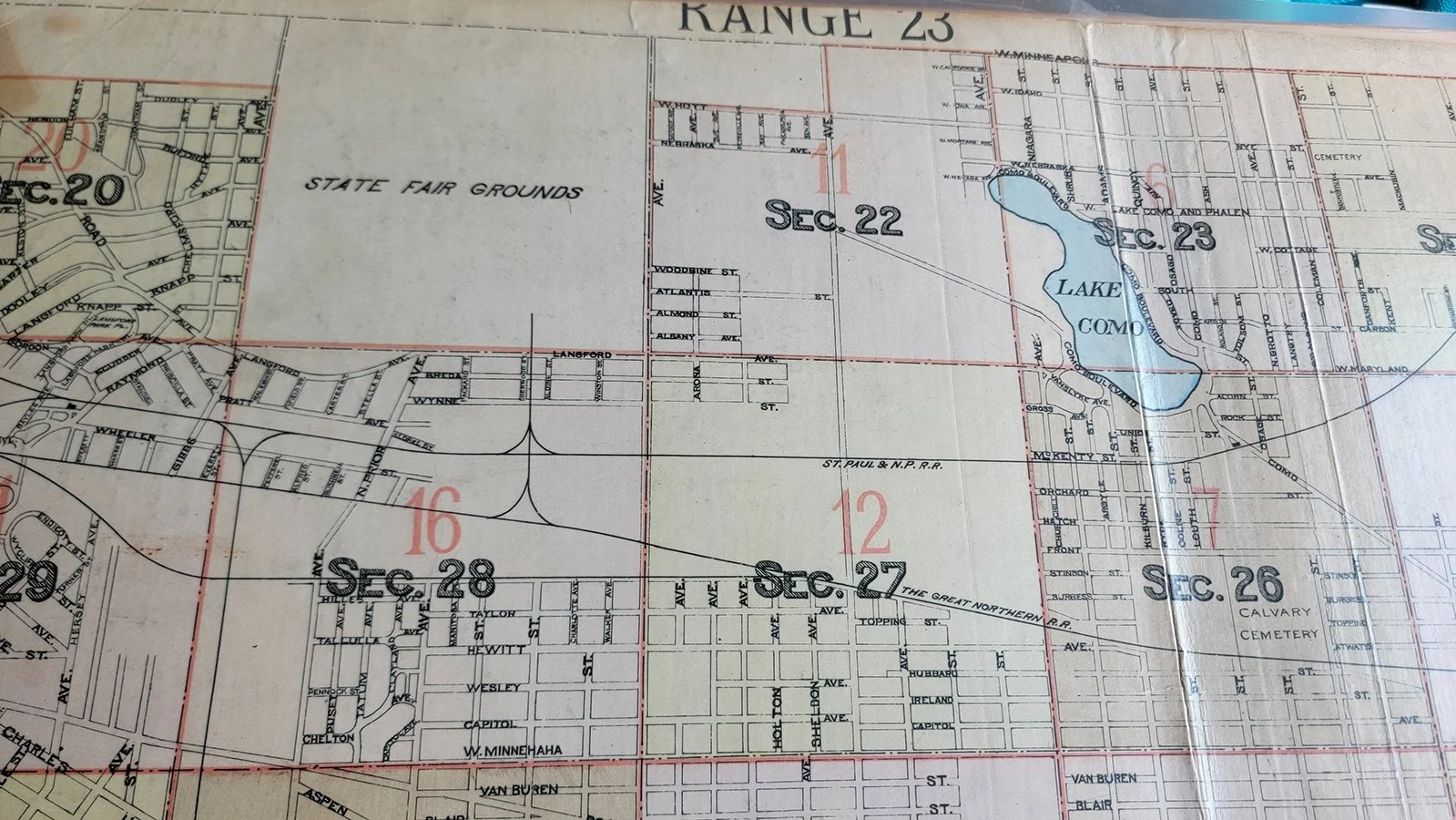A Recent Lawsuit Uses “Environmentalism” To Argue Against Walkable, Compact Development in Minneapolis. What the Heck Is Going On?
Minneapolis. (Source: Flickr.)
Sometimes when you win the battle, you haven’t remotely won the war yet.
A surprising legal victory by a coalition of self-proclaimed environmental groups in Minneapolis is the latest roadblock in that city’s stumbling path to zoning reform. On June 15, a Hennepin County district judge sided with the groups in ruling that the city must halt implementation of its groundbreaking Minneapolis 2040 plan, which aims to, among other things, legalize incremental development throughout the city’s neighborhoods, and orient the city’s transportation vision away from car-dependency while supporting alternatives to driving.
Wait a minute. Environmental groups are mad at a plan that aims to reduce…(checks notes)…driving? What’s going on here?
First, we’ll rewind slightly. In 2018, the city of Minneapolis drew national attention when, by a 12–1 vote, its city council approved a new comprehensive plan, Minneapolis 2040. The guiding document for city planning for the next decade, it committed Minneapolis to a veritable wish list of policies for those seeking to embrace compact development and draw growth back into the core of the massive Twin Cities metro area instead of its suburban periphery. The plan is huge (as all comp plans are), but among the most noted of those commitments:
End parking minimums citywide.
Allow up to three units on residential lots citywide, including in the 70% of the city previously zoned for only single-family homes.
Allow mid-rise residential buildings (4–6 stories) on major transit corridors.
A plan is not a policy and doesn’t have the force of law: Implementing 2040 required changes to the city’s actual zoning code and other ordinances. These changes have fallen short of the plan’s aspirations in some areas. Still, the parking reforms have been a considerable success in enabling small apartment buildings to be built—the transit-corridor zoning is also being used to produce taller and denser housing than previously allowed, and rents are actually falling in Minneapolis, bucking the trend of almost all other major U.S. cities.
So amid this cautiously optimistic news, it came as a dissonant shock on June 15 when Judge Joseph Klein ruled that the city had failed to respond to the claims of plaintiffs that implementation of the plan would cause environmental damage. Under a state environmental law, the Minnesota Environmental Rights Act (MERA), citizens may sue to prevent pollution of the land and water.
So what does this ruling mean?
Define “Environmental Impact”
This lawsuit specifically targets the fact that the 2040 plan, if realized, would increase the city’s population density. In this, it is reminiscent of a case in Berkeley, California, that drew national attention in 2021 when a judge ruled that the University of California, Berkeley, must freeze its enrollment until it conducted a rigorous environmental review to assess the environmental impact of adding new students to campus. That suit provoked outrage and bafflement across Berkeley and California, and ultimately a state law to (partially) remedy the situation.
The Minneapolis suit was filed by a group called Smart Growth Minneapolis (no relation to Smart Growth America, which is in favor of urban infill development and has published positive coverage of the 2040 plan), alongside the local Audubon Society chapter and Minnesota Citizens for the Protection of Migratory Birds. It alleges that the city should have been required to do an environmental assessment of the effect of the 2040 plan in total. According to the Minneapolis Star Tribune, the city previously “countered, arguing that environmental reviews were meant for individual projects and not comprehensive plans guiding the overall direction of development.” The city has now been ordered to either rebut the claims of plaintiffs about environmental impacts, prepare an “affirmative defense” of the plan, or scrap it and revert to the previous comprehensive plan, Minneapolis 2030.
In the meantime, the city is to halt implementation of zoning changes predicated on the 2040 plan. This arguably means that, according to Judge Klein, Minneapolis must resume requiring all new developments to provide parking. In the name of the environment, of course.
What both of these lawsuits have in common is an assumption that new people inherently bring negative environmental impacts that require mitigation. Interpreted radically enough, any government act that would increase the population of a place, or allow it to increase, might be a target for litigation.
Or, as urban planner and former Twin Citian Alex Schieferdecker put it, “the implication of this opinion is that the most environmentally friendly thing Minneapolis could do would be to raze itself to the ground.”
Ducks on Lake Harriet, Minneapolis. (Source: Flickr.)
On some level, the claim that people inevitably bring impacts is self-evident. But what’s actually rearing its head here is a deep schism in the understanding of environmentalism. It’s one which, if I may paint with broad strokes, tends to fall along generational lines.
When the environmental movement exploded into the national consciousness in the 1960s and 1970s, the battle lines were over the kinds of impacts that are highly visible locally: smog, water pollution, the loss of habitat and endangered species. The battles that were won in that era were things like the passage of the federal Clean Air Act and Clean Water Act: laws that targeted forms of pollution that primarily affect local environmental quality.
That version of environmentalism was essentially a quality-of-life movement, and it achieved stunning quality-of-life victories in American cities. For those (including myself) who weren’t alive back when the Cuyahoga River was on fire, it’s hard to appreciate the magnitude and importance of these victories.
What the environmentalism of the 70s was not very attuned to, however, was spillover effects: the ways in which impacts don’t disappear because you ban them within one specific set of borders, but just move outside those borders.
The flagship laws passed in that era also have a distinct status-quo bias built into them. NEPA (the National Environmental Policy Act) and its state-level analogue, including Minnesota’s MERA, require government agencies to assess the environmental effects of their proposed projects before taking action. Implicitly, the burden is on the agency to prove that their actions won’t create new environmental harms, regardless of any harm already occurring under the status quo. The avoidance of harm already occurring under the status quo is much harder to prove to the satisfaction of a judge. And the easiest kinds of harms to prove are generally those with a demonstrable local effect—like point-source water pollution, tailpipe emissions, the paving over of land—not those that involve spillover effects somewhere else.
That earlier version of environmentalism, along with the body of environmental law it spawned, is incoherent in the face of challenges like climate change, whose effects don’t respect any human borders. To a newer generation of environmentalists, whose advocacy centers on climate, it is completely obvious that compact, walkable urban development has environmental benefits. (A growing body of data also confirms that as a general rule, the per-household carbon footprint in urban U.S. ZIP codes is considerably lower than in suburban ZIP codes.)
Those benefits come from behavioral changes. When people live in apartments, they share walls, saving on heating and cooling-related energy use. On net, compact development gets people to drive fewer miles and makes it more possible for those so inclined to eschew cars altogether. (Transportation-related carbon emissions are negatively correlated with urban density.) Minneapolis’s abolition of parking minimums, one of the centerpieces of 2040, removes a source of mandated car dependence. Attacking this on environmental grounds, to almost anyone who grew up hearing about climate change, is incoherent.
After all—and it feels silly to have to say this so bluntly—if people don’t move into Minneapolis, those people don’t disappear into the ether. They just live outside Minneapolis. Most likely, a lot of them live in the Minneapolis suburbs—where, on average, they have a bigger house and garage, own more vehicles, and do more driving.
The gap between conceptions of environmental impact is evident in the study the lead plaintiff group commissioned of the environmental impacts of the 2040 Plan. It contains a lot of words, but here are some it doesn’t: "climate,” "emissions," "gasoline," "fossil," "energy." "Carbon" appears once, but only in the context of hydrocarbons deposited into storm sewers.
It’s easy to assume that all of this is just cover for garden-variety NIMBYism: the mansion owners of Minneapolis not wanting more neighbors. And while I don’t like to assume bad faith as a rule, I will observe that Smart Growth Minneapolis is remarkably elusive about what alternative they would prefer to the Minneapolis 2040 plan. Their website urges Minneapolis to be “smart—not reckless—as it plans for future density,” but there is literally zero concrete policy prescription or indication of what this group thinks “smart” density looks like. It’s hard not to conclude that this group’s real goal is to preserve the land-use status quo.
But let’s assume the well-established Audubon Society, at least, is operating in good faith. They’re still misguided here. They’re misguided here because of a tunnel-vision version of environmentalism that ultimately won’t achieve their goals. Or will, at best, achieve some of them (some preserved migratory bird habitat in urban yards) at the expense of greater harms elsewhere.
Minneapolis. (Source: Flickr.)
Sand in the Gears
The 2040 plan is very unlikely to be scrapped because of this. The ruling will likely either be overturned on appeal, or Minneapolis will produce the requested environmental assessment, which will no doubt address walkability and carbon emissions and all the other factors that “Smart Growth” Minneapolis ignores. But it demonstrates the willingness of the defenders of the status quo development pattern to use litigation to tie up land-use reforms.
There is no precedent in Minnesota for this kind of environmental review of cities’ comprehensive plans. Exurbs frequently plan, explicitly, in their comp plans for doubling or more of population in the span of as little as a decade, and for the rapid conversion of rural or wilderness land to suburban development. None of them are asked to justify the environmental impact. Individual development projects may be, and have been.
The problem with suing over a plan rather than a project is that, by definition, the impacts in the plan haven’t happened and may never happen. The judge in this case bafflingly suggests that the environmental impacts of Minneapolis 2040 should be evaluated in a scenario of “immediate, full build-out,” which misunderstands the comprehensive planning process.
The judge observes that the City of Minneapolis authorized, as of right, the construction of 150,000 housing units under Minneapolis 2040. Many of those will never be built. Minneapolis did not conjure population growth by passing Minneapolis 2040. It simply anticipated it, and sought to steer it into a more productive (and, yes, eco-friendly) development pattern. Suppose the city (whose current population is just over 400,000) had, instead, passed a more radical upzoning plan that would authorize 1.5 million housing units—would it be right to assume that any significant share of them would actually be constructed? The answer is obviously no: Zoned capacity is not the same thing as development plans.
The logical implication of this ruling is that any plan that would acknowledge or anticipate population growth is grounds for review under state environmental law. This is completely untenable in practice: a recipe for planning paralysis.
Which, of course, is the point. It is likely that the real goal of the plaintiffs is to delay. This is a tactic that status-quo defenders of this sort know well. You can deter change by making it more costly. In some cases, you can stall its implementation until the political winds shift in your favor.
I don’t think they’ll win this one, but they’ll impose costs and confusion in the meantime. Development projects in Minneapolis will be stalled because of the uncertainty around zoning rules created by this ruling. Planning by litigation is no way to grow a stronger city.
Strong Towns is changing the conversation about growth and development across America. Join the movement. Become a member today.







Is your city leaping before it hops?